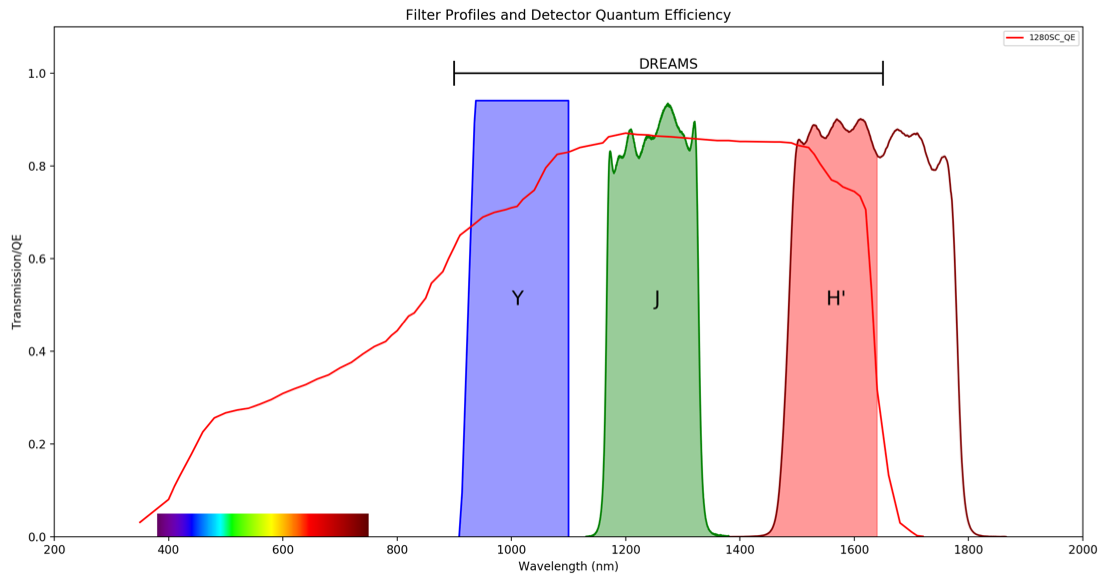Telescope: Detector and Filters
In order to achieve the large number of pixels required for its large field-of-view, DREAMS will use 6x Princeton Infrared Technologies 1280Scicam Indium Gallium Arsenide (InGaAs) cameras. InGaAs detectors are not traditionally used in astronomical applications due to their higher noise properties and a shorter cut-off wavelength.
The Princeton Infrared Technologies 1280Scicam is a commercial-off-the-shelf unit with an in-built cooling system, controller, and software for a fraction of the cost of traditionally used Mercury-Cadmium-Telluride (HgCdTe) arrays.
A specification sheet for the 1280SCICAM is available here.
Due to the higher noise properties of InGaAs detectors, they are not normally selected for astronomical instruments. However, recent test observations made with an InGaAs prototype astronomical camera have shown that they are capable of delivering sky-photon limited noise performance. These InGaAs detectors are suitable for use for observations to just under 1.7 microns in the H band, which is shorter than the atmospheric window however they still provide a sufficient window for the science cases.
DREAMS utilises a unique optical design which converts the F/6 beam from the telescope into a F/2 beam on the detector, this means that the sky noise in every pixel is sufficiently large that the higher read noise detector unit can be implemented with no degradation in performance.
The figure below shows the Quantum Efficiency of the 1280Scicam as well as the filter profiles that DREAMS will have. Each individual optical relay will have their own individual filter wheel allowing DREAMS will be capable of unique tiling strategies across the sky.
